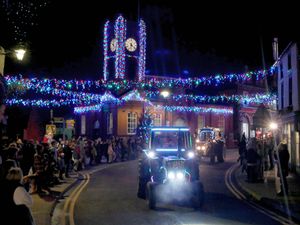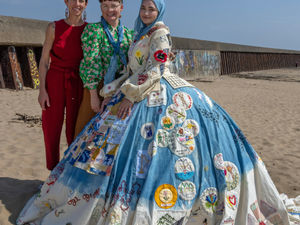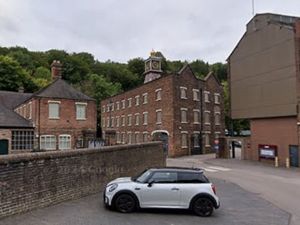Rare German Dornier bomber staying put at RAF Cosford
A rare German wartime bomber that was raised from the seabed will be permanently homed at RAF Cosford.
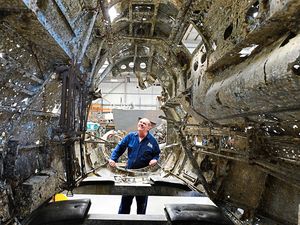
The Dornier is the world’s only surviving Do-17, a German aircraft type that played a crucial role in the Battle of Britain.
It is being refurbished by specialists at the Michael Beetham Conservation Centre (MBCC) at the museum, where it has been since it was raised from the bed of the Strait of Dover in 2014.
Michelle Worthington, a spokesman from the RAF Museum Cosford, confirmed the plane will now have to stay in Shropshire because it is too fragile to move.
“The museum originally intended to exhibit the Dornier in London, however due to fragility of the airframe structure, which was identified during the conservation process, it has been decided to retain the aircraft at Cosford within a display environment conducive to its long-term preservation. To this end, options for exhibiting the Dornier are now being considered.”

Work to remove detritus on the plane’s fuselage, collected during 70 years under water, was completed in 2016, but the metal requires special care before the aircraft can be exhibited.
“As our team of technicians has been heavily involved in the aircraft moves throughout 2017/2018 at our London site and on aircraft tours with the RAF throughout the centenary year, we are now refocussing on the projects currently housed in our Conservation Centre here at the RAF Museum Cosford,” said Michelle.
“Raising the Dornier was only part one of a complex and on-going operation to prepare this historic aircraft for public display.
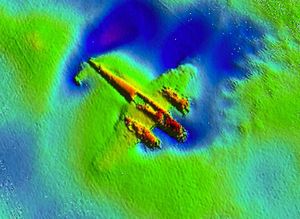
“Immediately following its recovery, the Dornier was delivered to the museum’s specialist facility, the MBCC, at Cosford. Here, work focussed on the aircraft’s conservation employing new and innovative techniques developed in partnership with Imperial College London.
“This programme has now reached an advanced stage and plans are being formulated for the aircraft to go on exhibition.
“The museum is very excited at the opportunities presented by the Dornier in relaying the RAF story to our audience. It will provide an evocative and moving exhibit that will allow the museum to present the wider story of the Battle of Britain and highlight the sacrifices made by the young men of both air forces and from many nations.”
The restoration of a unique aircraft

It was the height of the Battle of Britain and as midday struck on August, 26, 1940 the German Dornier 17 bomber attempted to attack airfields in Essex.
The aircraft was shot down and forced to make an emergency landing on the Goodwin Sands at low tide.
The Dornier, flown by Feldwebel Willi Effmert attempted a wheels-up landing and touched down and the aircraft sank inverted – it would stay there for 70 years.
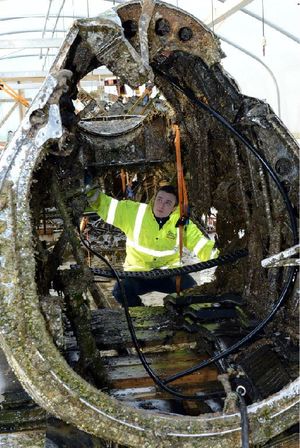
Effmert and his observer were captured but the other crew men died and their bodies were washed ashore later.
The Ministry of Defence is responsible for the investigation of all military aircraft crash sites in the United Kingdom and only issued a licence for recovery of the Dornier because it was not a war grave.
The aircraft’s crew of four were all accounted for and no human remains were present in the aircraft.
The aircraft was raised from the seabed in 2013 in an extensive operation and taken straight to the MBCC at Cosford where a team of specialists and technicians have worked to bring the plane back to a state suitable for display.
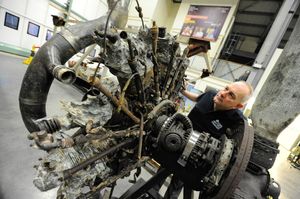
Work to remove all the build-up from its 70 years under the water on the main body of the plane was finished by 2016, but the metal has been left fragile and requiring special care, so much so that plans to move the plane to London for exhibition have been scrapped and it will now be permanently homed at the RAF Museum at Cosford once completed.
The Dornier’s twin-engine, twin-fin configuration, together with the narrow fuselage and shoulder-mounted engines, gave the aircraft a distinctive silhouette and earned it the nickname the Flying Pencil.
More than 400 were employed by the Luftwaffe during the Battle of Britain in the Second World War.
At the time of the Dornier’s recovery it was unclear just how much of the aircraft could be saved following more than 70 years on the seabed.
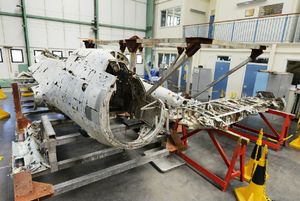
But for the last couple of years the team that was dedicated to the Dornier has been heavily involved in the aircraft moves throughout the last two years at the RAF Museum’s London site and on aircraft tours with the RAF throughout the centenary year.
Now focus has shifted back on to projects at the Cosford based centre, including the Dornier.
Despite good progress there is more work to be done before the plane can go on permanent display.
The Dornier and its many small components were sprayed with a citric acid solution for months in order to clear them of debris from their time under the water. Experts from the Imperial College London have been working out the best way to treat the metal before it can be shown to the public.
The process so far has seen the aircraft systematically sprayed, inside purpose-built hydration tunnels, with a low concentration citric acid-based solution.
It has helped to remove marine growth and subsequently rust and corrosion in the aluminium aircraft structure.
Confident that the citric acid solution has done its job, the fuselage was removed from the tunnels in early September 2014 and has undergone an intense wash down, before being moved into the conservation centre.
Technicians then began working on the Dornier full-time. The gradual process of removing the thick layer of marine deposits revealed several bullet holes and shrapnel damage on the airframe, plus small areas of the original paint finish.
Once work is complete the plane’s permanent display will be the first time it has been seen publicly since 2014.


